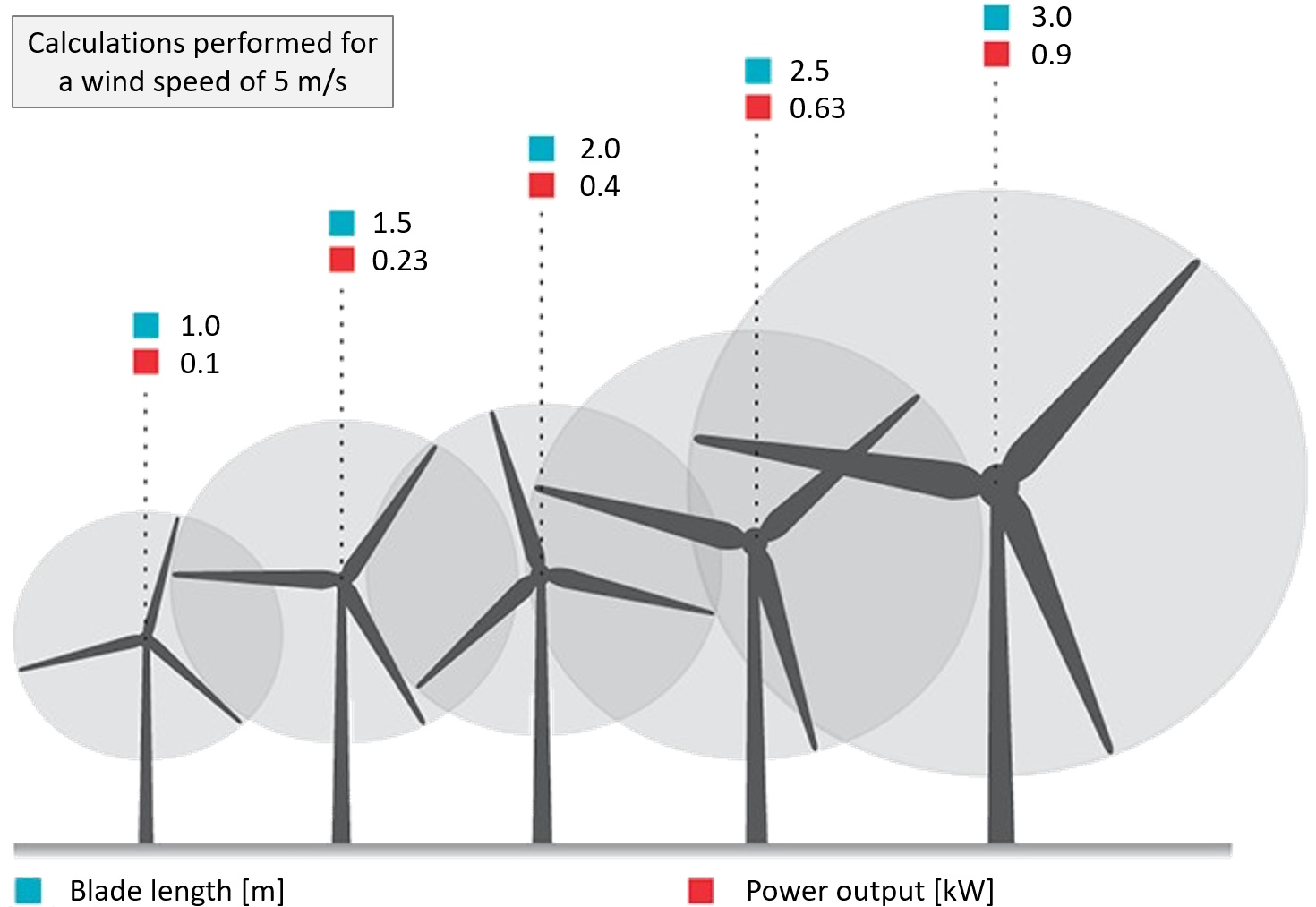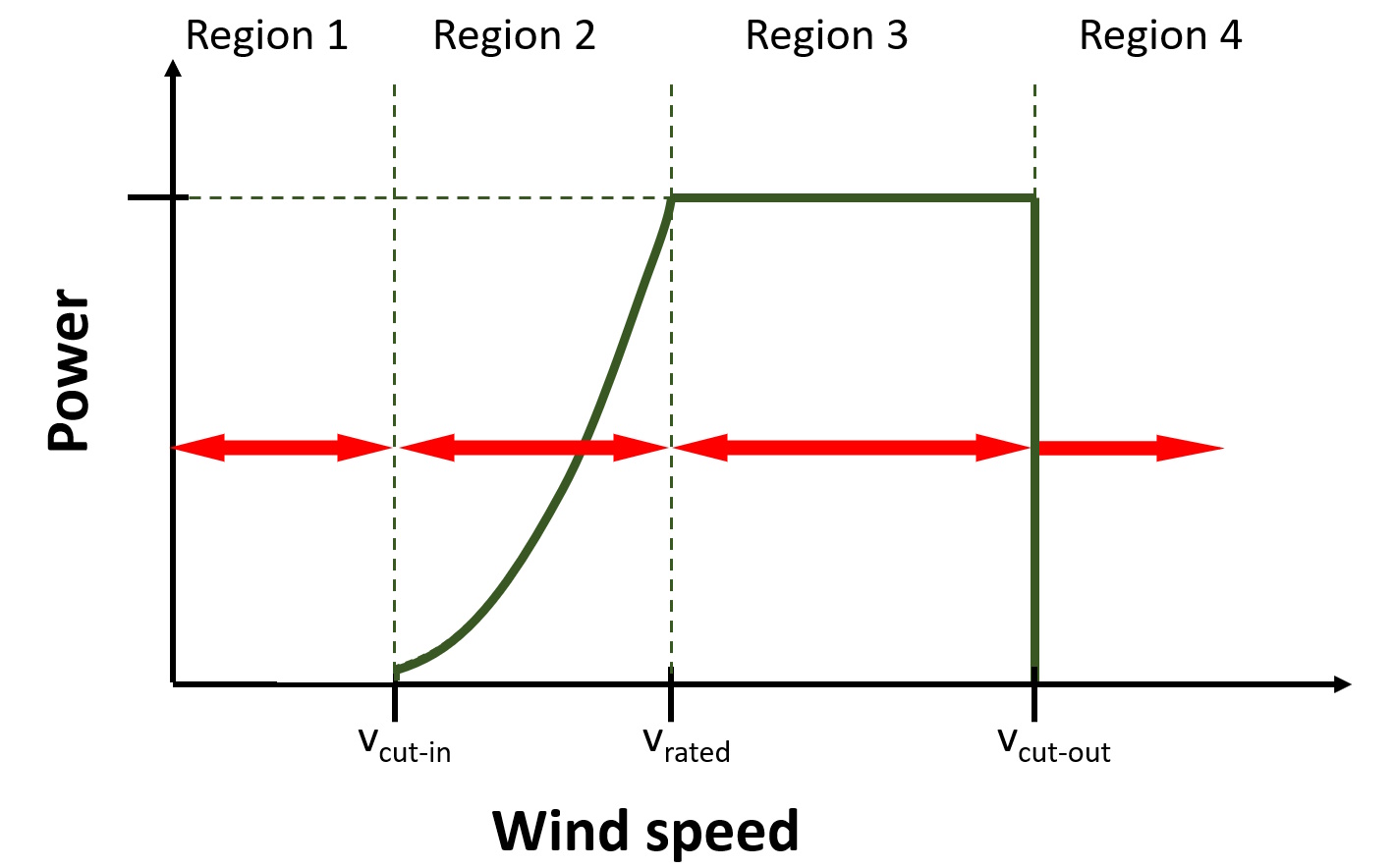So what next? We have wind measurements and we do have an overview of the consumption on site. The next step is to pre-select a wind turbine. In this first step, the turbine needs to provide about the required yearly energy production or maybe a bit more. The fine-tuning later will show what the best cost-efficient solution is. So what do we need to know about the turbine? What is the best way to select a wind-turbine and what are the relevant parameters this selection will give us?

Source: after https://www.klein-windkraftanlagen.com/
Type of turbine

There are two principal types of wind turbines, one with a horizontal axis (HAWT) and another one with a vertical axis (VAWT). They are illustrated here on the left. The animation on top shows how they spin.
From these pictures, it can be seen that HAWTs will have to orient themselves into the wind (either by wind vanes for small turbines or motors for larger turbines) whereas this does not matter for VAWTs.
VAWTs are often less loud than HAWTs and produce less flickr (alternating shadows from the blades of the turbine). On the other side, HAWTs are said to be more efficient and are usually cheaper (for the same power output).
The generator
One of the most important modules of the wind turbine is the generator. It determines the maximum power a wind turbine can produce if a certain wind speed is reached (so-called rated wind speed). A 5kW wind turbine has a 5kW generator and can therefore produce a maximum power of 5kW.
The rated wind speed, however, will not always be reached, especially for areas where the wind is not too strong. Rated wind speed are often in the range of 10m/s for small- and mid-size wind turbines, or even larger for large wind turbines. The smaller the wind turbine, the more important is therefore another turbine parameter, the blade length.
The blade length
The length of the rotating blades determine the 'area in the wind', the so-called 'swept area'. It is a very important selection criterion for wind turbines operating in areas where the rated wind speed will not or only occasionally be reached. In this case, it means that a 5kW wind turbine can produce more energy with longer blades than with shorter ones. The influence is actually quadratic, so if we double the blade length, the power output is 4 times as much, if we triple the length, the power output is 9 times higher.

The power curve

All the aforementioned information is bundled in a graph which the manufacturer of the wind turbine provides and which shows the (measured) power output of the wind turbine against the (measured) wind speed. This graph is called 'power curve' and is ideally certified by an independent organisation verifying the information provided by the manufacturer.
The power curve (the thick black line in the graph) is split into four regions which are explained in more detailed below.
'Region 1' is the region where the wind speed is too low to move the blades. Often the wind direction is also not steady enough to turn the wind turbine in the right direction.
In 'Region 2', there is enough wind, the turbine begins to spin and the power output is dependent on the wind speed and the length of the blades, as explained before.
In 'Region 3', the maximum capacity of the generator kicks in. Although the wind speed is still increasing, the turbine cannot generate more power, since the generator is at its maximum capacity. This is an ideal situation and typically we would try to run the wind turbine always at the maximum capacity of the generator.
Finally, 'Region 4' is the region where the wind speed is too high. The blades would spin too fast and the load on the wind turbine could get too high. Therefore, either the blades 'pitch' in the wind (like a sail on a sailing boat) or a brake stops them and the turbine is not generating power any more.
So, ideally we would like the turbine to operate in Region 2 or Region 3, preferably the latter. Any other region is not producing power and therefore not desirable. Hence, the selection of a turbine tries to match the power curve with the wind speeds at the site in a way, that the wind turbine can operate as much as possible in these regions.
What can justASK! do for you?
First of all, justASK! is not connected to any turbine manufacturer. We are a free consultancy company and we select wind turbines according to their market readiness and performance. Therefore, from our knowledge of the market and experience, we will assist you in (pre-)selecting your turbine, depending on the site analysis, the available wind speed and direction, the consumption on site, and potential locations.
justASK! will then use all the data together, wind, consumption, wind turbine, costs, etc., we can provide you with relevant, up-to-date information about installing wind turbine(s), incl. cost and business case analysis, legal, and engineering aspects. JUST ASK!
